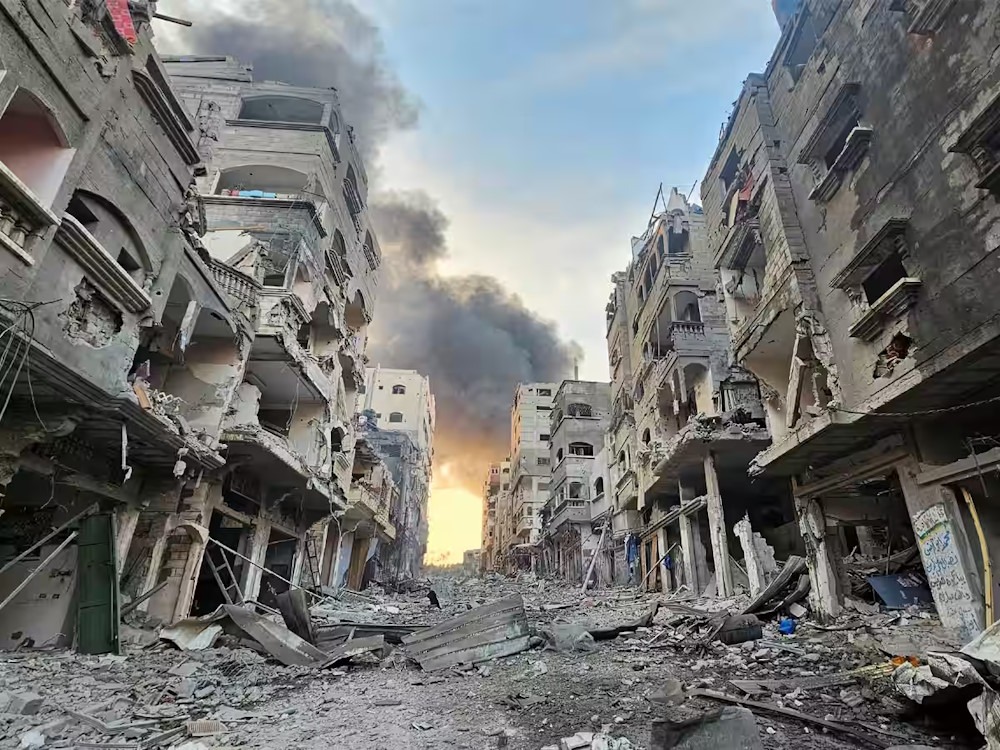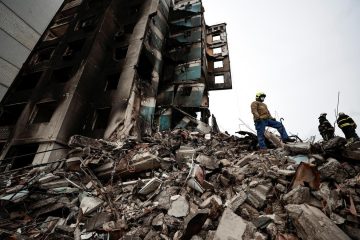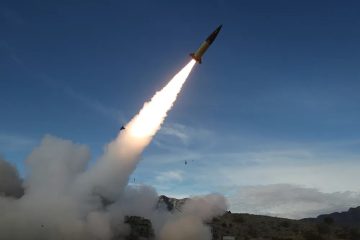U.S. and allied forces last resort to secure relief for Gaza

As a temporary solution, the United States and its Middle Eastern partners are increasing food aid airdrops into Gaza to alleviate the humanitarian situation and bring an end to the Israel-Hamas conflict.
As mediators scramble to secure an end to hostilities between Israel and Hamas, which would release Israeli captives and permit an influx of relief into the devastated strip, military transport planes are delivering food and other supplies to the restricted enclave by airdrops after coordinating with Israel. More than one million displaced Gazans have taken refuge in the city of Rafah in southern Gaza, where Israel has threatened to assault unless Hamas releases hostages by the beginning of the Muslim holy month of Ramadan in the near future.
On Saturday, 38,000 ready-to-eat meals in military style were dropped into Gaza by the United States. Additionally, humanitarian supplies have been airdropped into the strip from Egypt and Jordan. Since truck supplies are becoming too risky, humanitarian organizations and the UN have stated that they are open to any help, but that airdrops will not be sufficient to alleviate the increasing hunger problem on the strip.
The people of Gaza require far more than what the United States is able to provide through airdrops. Nearly half of Gaza’s population—1.1 million people—were fed by the United Nations’ World Food Program in the early weeks of the conflict.
Third nations are focusing on finding technical answers instead of political ones, according to Bushra Khalidi, a policy lead at the anti-poverty campaign Oxfam. We can’t keep relying on short-term fixes. And we must strive to put an end to the collective punishment and systematic deprivation tactics that the Palestinian people face on a daily basis.
Israel insists it is doing all it can to make assistance deliveries to Gaza and rejects claims that it is trying to collectively punish the population there. On Sunday, 277 vehicles bringing humanitarian supplies were examined and allowed entry to Gaza, according to the Israeli military’s Coordination of Government Activities in the Territories, which is responsible for monitoring civilian matters in the West Bank and Gaza.
“The Gazan people are not our enemies; our war is with Hamas. Israeli military spokesman Daniel Hagari stated on Sunday that this is the reason behind their assistance facilitation efforts.
Airdrops, according to humanitarian officials, are inefficient, costly, and difficult to organize in comparison to truck convoys. Airdrops have been coordinated by the United Nations in the past during crises in South Sudan and Syria, however the World Food Programme reports that due to logistical difficulties, they are only considered as a last choice. Additionally, humanitarian organizations have stated that vaccines and other temperature-sensitive commodities cannot be transported via airdrops.
“Airdrops should not replace or distract from the importance of increasing the aid delivered directly to people in need through land routes. The only way to deliver supplies at scale,” stated Jonathan Crickx, spokesman for Unicef, the United Nations’ children agency, in the Palestinian territories.
According to U.S. officials, they are also considering the possibility of developing a maritime corridor in the Mediterranean to transport aid to Gaza.
Due to Israeli bombardments, lengthy checks and restrictions on aid trucks at border crossings, Israeli military checks inside Gaza, fighting with Palestinian militants, spotty communications, and a lack of fuel for vehicles, aid agencies say it has become increasingly difficult to deliver food and supplies to people in Gaza in recent months.
The delivery of supplies has become even more challenging because to the rampant looting, lawlessness, and mounting despair among the Gazan population. Hundreds of thousands of people are growing more and more desperate as a result of the power vacuum left by the Israeli military operation, which effectively demolished the Hamas-led government in northern Gaza.
Authorities in Gaza City said last week that over a hundred Palestinians were killed when crowds rushed toward an aid convoy staged by Israel along a coastal road in Gaza City, highlighting the worsening situation in the territory. Israel claimed responsibility for the event, saying its forces opened fire on multiple persons who had approached a group of soldiers in a dangerous manner. The military has assessed that less than 10 people were killed. Hundreds of people were reportedly murdered in the stampede that broke out as Palestinians rushed to seize wheat bags from the convoy’s vehicles.
Israeli officials reported that 1,200 Israelis, mostly civilians, were killed when militants from Hamas crossed into Israel from Gaza on October 7. Israeli military minister Yoav Gallant vowed, “No electricity, no food, no water, no fuel,” on October 9 as the Israeli government imposed what it claimed was a complete siege of Gaza in an effort to crush Hamas in the Palestinian enclave. There is no one available. We are behaving in accordance with the fact that we are against sentient beings.
The enclave of Gaza was virtually cut off from the outside world when Israel imposed its siege on the territory. This came after years of tightening restrictions on the entry and exit of Gazans by Egypt and Israel. As a result of the October siege, Gaza’s economy came to a virtual standstill. Almost immediately after the conflict broke out, Israel started letting trucks bringing food and medicine into Gaza, but the supply still wasn’t enough to satisfy the people’s demands. The United Nations reports that daily averages of 500 trucks entered before to the war, but in the last week of October, the maximum number of trucks admitted in a single day was 59. While there was a weeklong truce in November, assistance flows increased.
Since the war began, more than 30,000 people have been killed in Gaza. The majority of those casualties are women and children, according to Gaza health officials, whose numbers do not differentiate between militants and civilians. In recent months, aid agencies, including the United Nations, have intensified their efforts to feed and assist Palestinian civilians.
The United Nations and humanitarian organizations have stated that the only option to restore relief supplies throughout the Gaza strip is for there to be a ceasefire. U.S., Egyptian, and Qatar-brokered indirect talks between Israel and Hamas have resumed in an effort to end the violence and liberate Israeli hostages taken by Hamas in the October 7 incident. Deaths at the supply convoy on February 29 reportedly halted negotiations.
Some Gazans have reported surviving on animal feed due to the dire circumstances, and the airdrops have arrived at a crucial juncture in the conflict. Famine threatens half a million Palestinians in the enclave, according to a late February warning from the World Food Programme. During his address to the United Nations Security Council in New York last week, the organization’s Deputy Executive Director Carl Skau stated that the rate of child malnutrition in Gaza is the highest globally.
Children are bearing the brunt of the hunger crisis, according to UN officials. Skau reported that “acutely malnourished” toddlers under the age of two make up one out of six Gazan children.
On Sunday, the health ministry in Gaza announced that up to fifteen children had died at Kamal Adwan Hospital due to hunger and dehydration in the past few days.
According to Adele Khodr, the regional director for the Middle East and North Africa at Unicef, “These tragic and horrific deaths are man-made, predictable and entirely preventable.”
While queuing outside an Israeli barrier in the coastal area of Deir al-Balah on February 5, a convoy of United Nations trucks transporting food to northern Gaza was fired upon by Israeli naval forces, according to U.N. authorities. Food supplies to the north were subsequently cut off by the United Nations and other humanitarian organizations. The Israeli military acknowledged the incident and stated that it was attacking “Hamas terrorist infrastructure” while conducting an investigation.
On February 18, the World Food Programme (WFP), one of the two primary United Nations agencies in charge of food distribution in the enclave, attempted to get food shipments to the north back on track. The agency once again suspended its missions to the north of Gaza that day after its trucks were attacked by frantic masses shortly after entering the territory and coming under fire.



